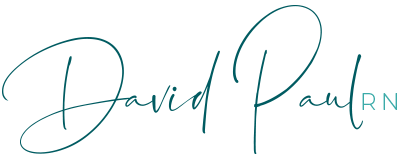
Type Two Description
Secondly there is “at ease”, “every day” or “Type 2” posture instruction which is given so little attention in the west that it is necessary to take some time to clarify the difference. “Type 2” posture instruction is laser focused on movement. “Type 2” is an umbrella term used in this blog site to develop a contrast to “Type 1” instruction.
I list this type of posture second, not because it is more or less correct, but because search results indicate it is far less common. Therefore it’s an alternative to the mainstream type of posture instruction, even though this is the type of standing, sitting and walking you should be doing 99% of the time…, if not more.
By looking at some organizations that endorse a movement approach to body mechanics you’ll see there truly are many alternative types of movement philosophies out there. Though it is changing, they are given little attention in the west.
Soon you’ll recognize how uncommon and under considered “Type 2” postural thought is and why it’s so sensible.
Type 2 posture might be differentiated by calling it the 30 million-year-old, sustainable, terrestrial, relaxed, sensible, straightforward, evolutionary, balanced, centered, natural, organic, movement oriented posture,
It’s the way you were born to stand, the way you were not taught to stand, common, correct, biologically correct, informal, dynamic, fluid, “at ease” posture (or…, posturing).
Many terms like that. There is no accepted common definition, differentiation or concept considered in our culture for the type of posture with these characteristics. This is the type of posture instructed in this Perfect Posture blog site, and other mentioned, movement related methods.
This is the way you were born to stand, sit and walk. You were endowed with a body that was designed to stand, sit and walk this way most of the time. You’ll get an idea of how sensible, logical, reasonable, healthy this concept is through clear instruction. And again, why it’s so different it could be called the anti-posture.
This second type of standing, sitting and walking was trained out of you in school and by your parents. When your parents were children this way of standing and sitting was trained out of them in school and from their parents. And so on.
It’s not part of western culture. It’s primal. It should always be used during informal activities. It can be sustained for extended periods without damage.
Type 2 posture should be used at home and activities of daily living not requiring formality. No long term sitting up straight in chairs or on benches, no standing up straight in lines, no standing at attention, no locked back knees, no holding the stomach in, no chest out, no shoulders back. No holding at all…, just balance.
Type 2 Definitions
From www.backpostureblog.com and Perfect Posture instruction
- Posture is the process of maintaining the body in a position of equilibrium of balance. Equilibrium of balance is the harmony that results from the balance of opposites.
- Perfect Posture is the dead center where the opposition of opposing forces – being equal in strength – succeeds in a balanced, resting motion. It is the central point. The point within the circle of physical symmetry. It is the living synthesis of counterbalanced power.
From www.feldenkraisinstitute.com:
- The Feldenkrais Method uses a process of organic learning, movement, and sensing to free you from habitual patterns and allow for new patterns of thinking, moving and feeling to emerge.
From www.alexandertechnique.com:
- “The Alexander Technique is a way of learning to move mindfully through life. The Alexander process shines a light on inefficient habits of movement and patterns of accumulated tension, which interferes with our innate ability to move easily and according to how we are designed. It’s a simple yet powerful approach that offers the opportunity to take charge of one’s own learning and healing process, because it’s not a series of passive treatments but an active exploration that changes the way one thinks and responds in activity.
From www.posturepage.com:
- Gravity is often considered a source of limitation and discomfort. You can use the Up With Gravity process to learn how to use gravity to improve your posture and bring greater freedom and comfort into your life.
None of the above definitions or descriptions state or imply posture is a ‘position’ to be held. All describe it as a process, method, technique, movement, a sensing, a freeing from habitual patterns. There is no “Correct”, or “Proper” position to be held or maintained.
Read on to discover how to maintain your body at the point of equilibrium, that point of balance, so you can maintain a resting tonus in all the muscles of your body. Always.

